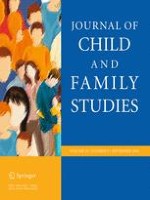08-06-2016 | Original Paper
A Meta-analysis of Wilderness Therapy Outcomes for Private Pay Clients
Gepubliceerd in: Journal of Child and Family Studies | Uitgave 9/2016
Log in om toegang te krijgenAbstract
Wilderness therapy is becoming a more widely used intervention for adolescents, but there have not been any meta-analyses focused solely on its clinical effectiveness for private pay clients. This study’s objective was to conduct outcome-based meta-analyses of private-pay wilderness therapy programs, benchmark primary features of this approach, and educate the clinical community as to its effectiveness. The authors conducted a review of all available databases, as well as manual searches. Searches resulted in a meta-analysis based on 36 studies, totaling 2399 participants receiving wilderness therapy. Our meta-analyses found medium effect sizes for all six constructs assessed: self-esteem (g = 0.49), locus of control (g = 0.55), behavioral observations (g = 0.75), personal effectiveness (g = 0.46), clinical measures (g = 0.50) and interpersonal measures (g = 0.54). Subgroup analyses included age of participants, duration of program, open or closed model, presence of a mental health practitioner, and publication year.
